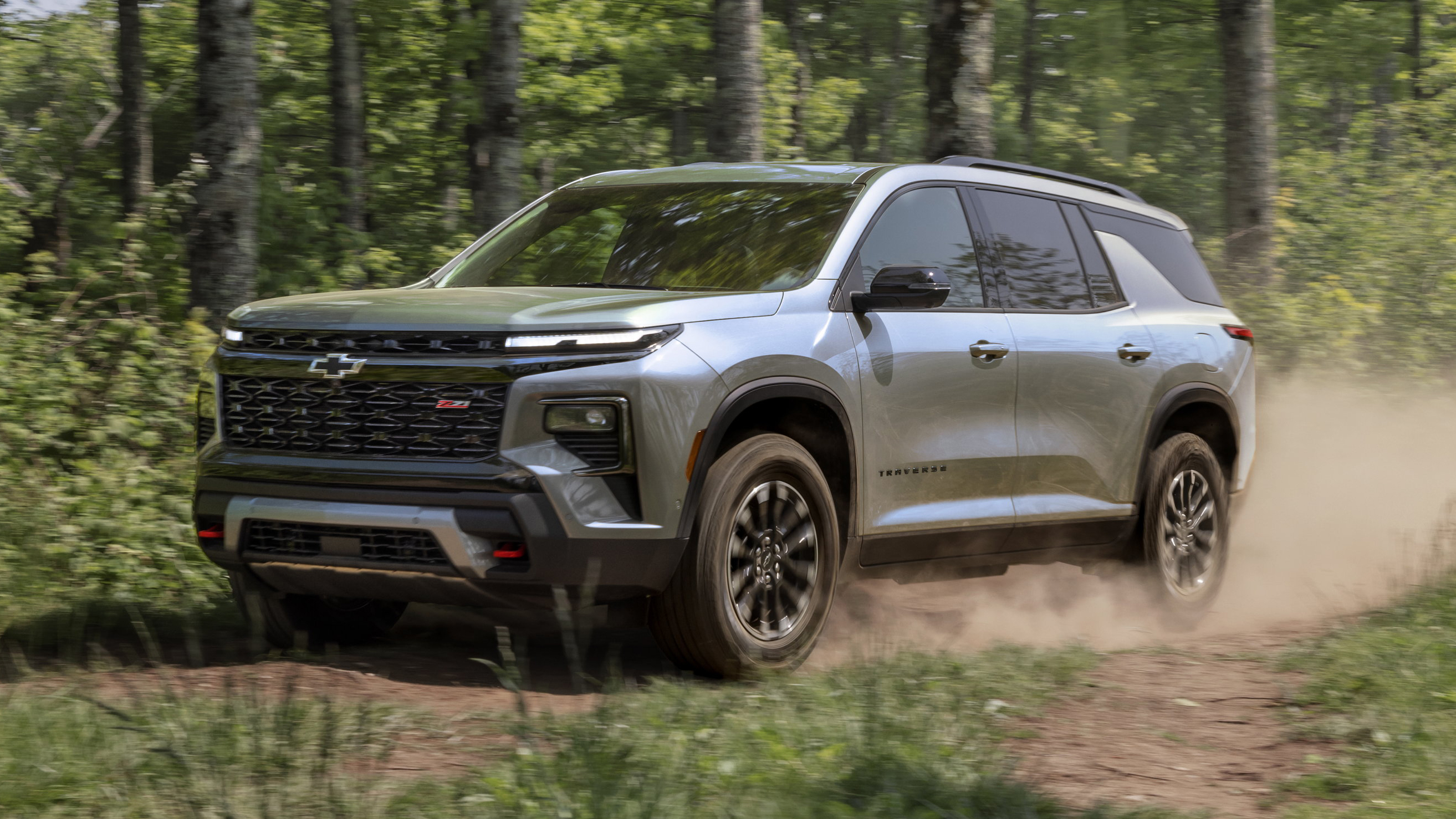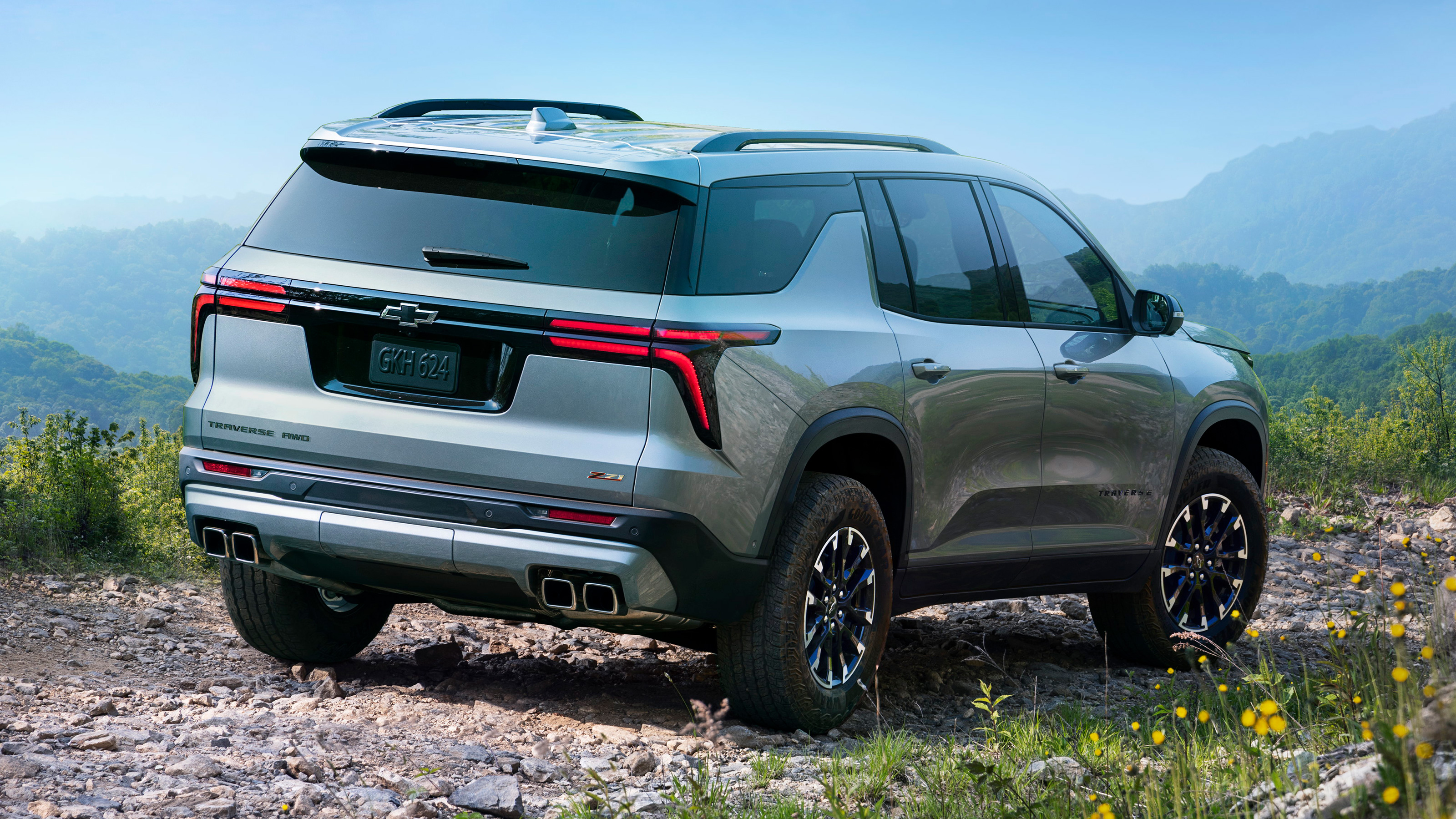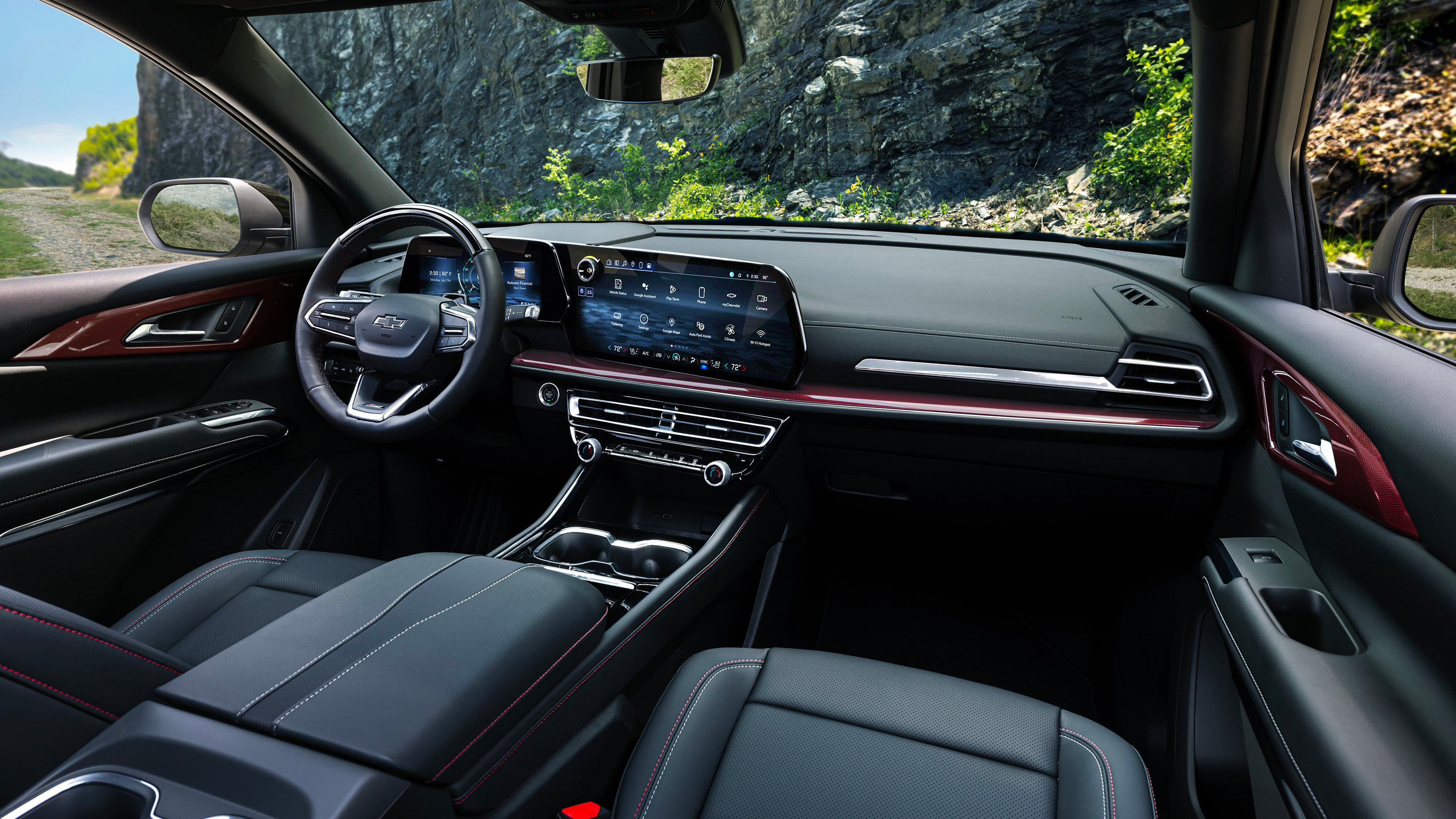
Chevrolet Traverse review
Driving
What is it like to drive?
There’s room for improvement, for sure. Not to belabor the point but the 2.5-liter turbo four-cylinder engine doesn’t cut the mustard here. 328hp and 326lb ft is not insignificant but the Traverse, a 4,800lb (2,177kg) vehicle, is inefficient with how it uses this power.
Available in front- or all-wheel drive, an eight-speed auto gearbox distributes the power accordingly. Off the line, it performs nominally for its purpose but once you’ve left the parking lot and put your foot down, the Traverse takes its time getting up to speed. All the while, the tinny engine rattles like a possum with emphysema.
Ostensibly, this engine choice is to provide competitive fuel economy and, to its credit, it doesn’t do half bad compared to its rivals. The EPA scores it with an estimated 21mpg combined, a touch better than the V6-powered Kia Telluride which, by the way, the Chevy also out-powers.
It’s also much stronger than the 2.4-liter four-cylinder in Toyota’s Highlander, but loses out in the mpg numbers game, even if you ignore the hybrid engine option. So why is it still so bad if on paper, it’s comparable if not better? All we can say is that the real-world execution of it just falls flat and ultimately feels like a poor fit for an otherwise competent SUV.
How’s the ride?
It’d be one thing if the comfort made up for the lack of power, but that’s simply not the case. The independent suspension, with MacPherson strut fronts and a multi-link rear, has the makings of a versatile system that could be better, and yet it feels like it was given very little tuning from ‘default settings’ if you catch our meaning.
As such, it’s very wavy on the rebound, even when just coasting down a hill, which builds up over time to a nauseating degree.
How is it on the highway?
When on a long stretch of even, straight road, the Traverse fares much better. In this ideal situation, passengers and drivers can enjoy the simply-appointed yet comfortable interior. It’s made better by liberal use of the Super Cruise drive assist that takes the reins for a while. Like Ford’s Blue Cruise, it’s a hands-free, eyes-up system that works on an expanding network of approved highways.
The systems are very similar, and one feature we like here is the automatic lane changing. We particularly like that it repositions you after a pass so you don’t become a left-lane hog. Ford’s in-lane repositioning is sorely missed when Super Cruise brings your vehicle uncomfortably close to an adjacent truck though.
Featured

Trending this week
- Car Review
Volvo ES90






